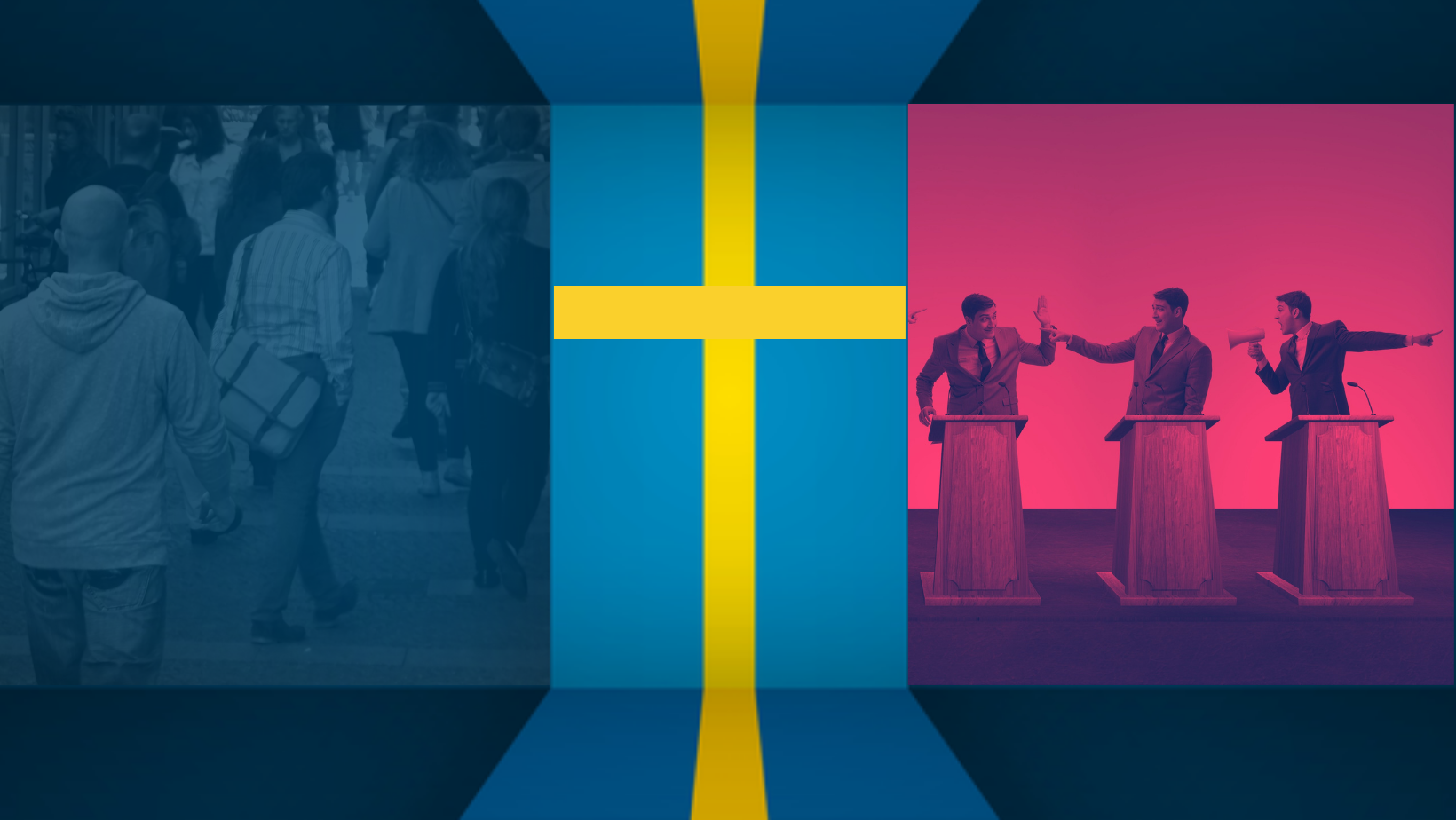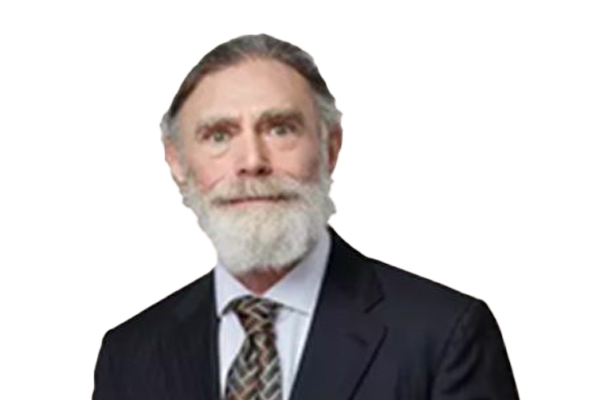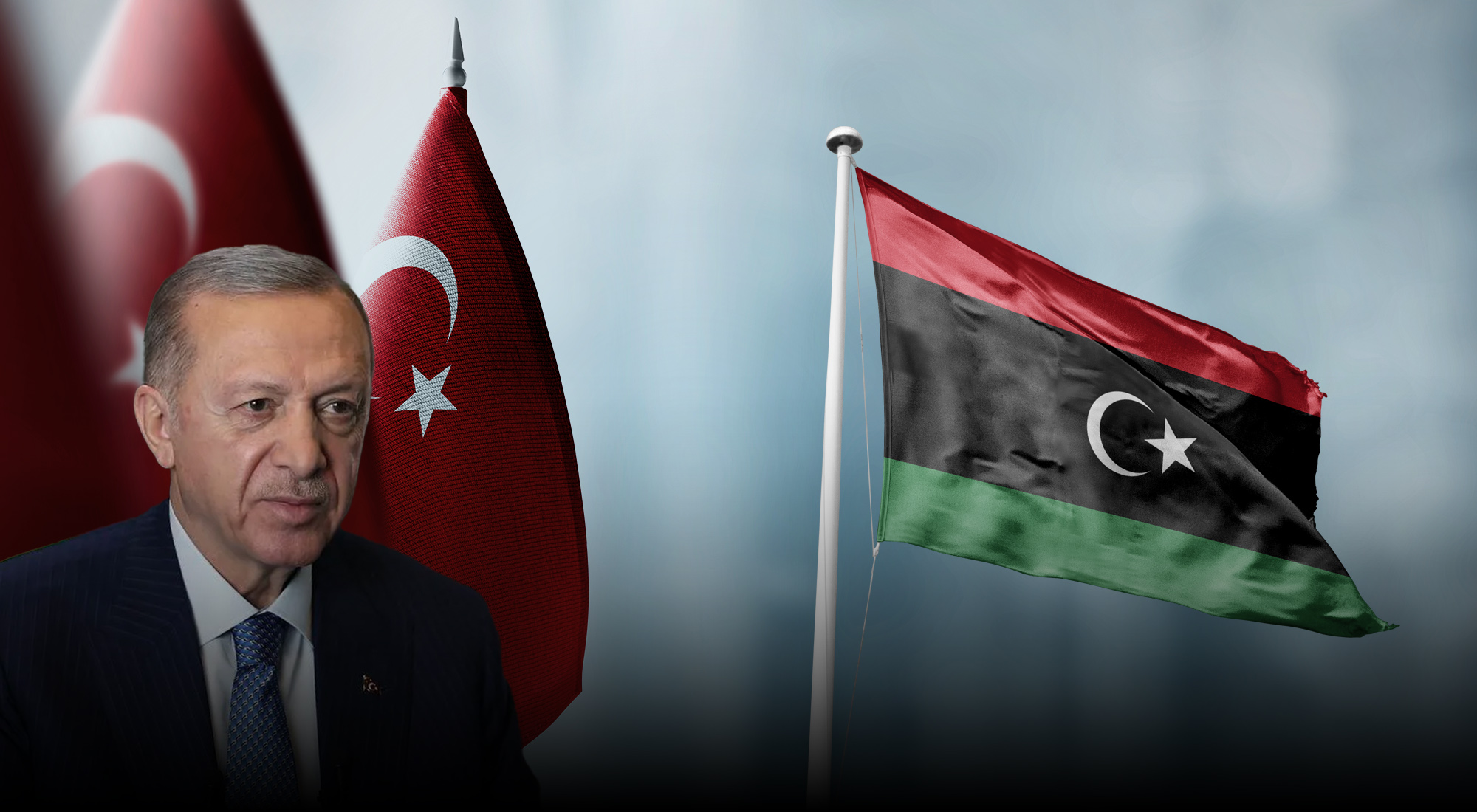Introduction
There have been no terrorist attacks in Sweden in recent years, which is in stark contrast to the public outrage over the rising crime rate and the large-scale immigration from war torn Syria and other hot spots in the Middle East. Despite dire prognostications of violence from Islamist groups and Daesh cells in particular, the primary threat facing Sweden today is from the far right which hopes to capitalize on widespread public opposition to the wave of immigration and the COVID-related strains on public health and other services.[1] In the study of right wing violence in Sweden two patterns emerge: first, that of all EU nations save perhaps the UK, the American influence is most prevalent; and second, that as the Sweden Democrats, a party that began with a heavy National Socialist constituency and after a facelift and a change of leadership has been able to market itself as a mainstream right anti-immigration party has become a major player in Swedish parliamentary politics, the far right has adopted a policy of avoiding violent actions so as not to compromise the path to power by right wing parties.
The Lone Wolves of the Right
Of the Scandinavian countries, Sweden is by far the most Americanized. Indeed, outside of Great Britain, no country in Europe has as great a religious affinity with the United States than Sweden. The large-scale immigration from the impoverished Swedish West country in the 19th century created early linkages which facilitated US and Swedish religious interchange. The globalizing effect of the internet, and Swedish youth’s ability to communicate in English, has accelerated this process.[2] This cultural and linguistic affinity has facilitated a thriving trans-Atlantic exchange of ideas, materials, and engendered a thriving political tourism between American and Swedish right-wing extremists.
In terms of the trans-Atlantic radical right, the American/Swedish connection is deep and, in many ways, remarkable. In the 1980s, as white power music was the engine driving the skinhead movement, the linkages which had been forged by individuals began to take on more organizational forms. The individual connections came first. For example, a teenaged Tommy Rydén who would become highly influential in the movement began a correspondence with Don Black, an American Ku Klux Klan leader. Later, he became the Swedish head of the American-based Church of the Creator, a racist network led by the American Ben Klassen. He in turn influenced a generation of younger activists who would coalesce around the white power music scene which produced a plethora of bands playing 3 chord punk with racist lyrics.[3]
The first white power concert took place in Sweden in 1985, which was headlined by the British white power band Skrewdriver which was fronted by Ian Stewart Donaldson. Skrewdriver was the prototype of the genre which numerous Swedish bands soon followed.[4] The first and most successful Swedish white power band, Dirlewanger was founded in 1986 and they in turn championed the “Rock Against Communism” concerts named in mocking imitation of the British Rock Against Racism concerts that opposed the racist skinhead bands of the late 1970s. Other bands such as Division S, Vit Aggression, Bärsärkarna, Svastika, Enhärjarna, Odins Änglar soon followed. Within a few years the audience for White power rock in Sweden grew exponentially until in 1997 a survey by the National Council of Crime Prevention (BRÅ) survey found that 12.2% of Swedish school children between the ages of 12 and 18 listened to the music.[5]
Ragnörok Records was founded in 1993 by Lars Magnus Westrup to promote the music, but it was Nordland, another white power label, that most personified the Swedish connection to the United States. Nordland soon developed a roster of the best bands in the white power genre and published a glossy monthly magazine, also named Nordland, to promote its product. At the same time, Resistance Records in the US became the top white power label, also publishing a glossy eponymous monthly magazine.[6] Dr. William L. Pierce, whose National Socialist pedigree dates back to the early 1960s American Nazi Party, acquired part of the company and soon Resistance Records was one of the top white power labels in the world.[7] An informal partnership between the US based Resistance records and the Swedish Nordland label which, according to the author’s fieldwork interviews, became so extensive that Swedish skinheads from Nordland became active in reorganizing the chaotic business practices of the US label and actually worked on Resistance magazine, where their English proved much superior to the native speakers of the Resistance editorial board.
As the skinhead subculture grew in Sweden, so too did the level of violence. This violence was in the nature of attacks on refugees and street fights with the anti-racist activists of ANTIFA (Anti-Fascist Action) but did not rise to the point of being classified as terrorism. This would soon change, and the influence of William Pierce definitely had a role in the change. Long before he dabbled in the racist music business, Pierce wrote two seminal novels that had global impact on the movement. The first, The Turner Diaries, fantasized about an oncoming race war in which white men would battle the non-white races and the Jews. The novel was a primary influence on Timothy McVeigh, the Oklahoma City bomber. His second work, Hunter, dedicated to and modeled on the life of American serial killer Joseph Paul Franklin, despaired of the race war and instead urged deadly lone wolf attacks against targets of opportunity.[8] It was not long before the first Swedish racist killers adopted these tactics and conducted a brief reign of terror in Sweden.
With the music scene as the background noise, Sweden produced two lone wolf killers of the right. The first was John Wolfgang Alexander Ausonius, the so-called ‘Laser Man’, who carried on a brief killing spree from 1991-1992. Ausonius killed one man, an Iranian student, and seriously wounded 10 others. Fleeing to Germany, he killed a Jewish Holocaust survivor, Blanka Zmigrod. Much like the American racist terror group the Order, which was led by Robert Matthews, Ausonius financed his activities by committing a series of successful bank robberies. He was sentenced to life in prison for his crimes.[9]
Between 2003 and 2010, Peter Mangs followed the examples of the Laser Man and Joseph Paul Franklin as immortalized in the pages of William Pierce’s Hunter and began a series of murders and attempted murders. Franklin’s murders in the United States went on for more than a decade. He shot and killed interracial couples and people of color. Included in his victims were such high-profile figures as the civil rights lawyer and advisor to President Bill Clinton Vernon Jordan and the publisher of the pornographic magazine Hustler Larry Flynt, whose depictions of interracial unions incensed Franklin. The police never were able to link Franklin’s murders into a coherent pattern as his victims were from many states and cities, and he left no manifestos or other ‘signatures’ on his crimes, making them appear to be unconnected random events in multiple localities. Finally caught, Franklin was executed in 2013, but his exploits became the model of the right-wing lone wolf terrorist.[10]
Peter Mangs was heavily influenced by Joseph Paul Franklin after reading Hunter.[11] His primary targets were individuals of mixed race, Roma and mixed-race couples, which precisely followed the pattern of Franklin’s coast to coast killing spree in the US. Like Franklin, police never found the pattern of the killings, investigating them as a series of disparate unrelated crimes even though most were concentrated in the area of Malmö in southern Sweden. Also, like Franklin, he was able to operate so long because her never took credit for his crimes. There were no manifestos or calls on the burgeoning white power music community to take up the cause or to imitate his actions. Unlike Franklin who operated nationally however, Mangs lived in Malmö, and his crimes were committed there.
Mangs was a dental technician—a profession requiring regular hours and his physical presence in a dental surgery—but by 2009, six years into his lone wolf campaign, he quit his job and became a full-time terrorist. Once arrested, Mangs readily admitted his crimes and released writings and statements lauding German National Socialist culture and warning of the dangers of immigration and miscegenation. To him, Sweden was under attack and Swedish culture in danger of extinction at the hands of non-whites, immigrants and Swedish “race traitors.”[12]
Refugee and Asylum Policy
The rising tide of right-wing violence and the emergence of terrorist actors did not occur in a vacuum. A group of right-wing parties dating back to the 1956 Nordiska Rikspartiet (the Nordic National [Reich] Party, NRP), founded by Goran Oredsson, existed on the fringes of the Swedish political system. It was strongest in Malmö, which would be the center of many racist groups of the 1980s-1990s. The early NRP’s actions were few and its sympathizers often found themselves serving three month stints in jail for incitement to racial hatred, assault, battery and harassment. Their first foray into terrorism was the source of considerable mirth when they lobbed a smoke bomb into a theater showing Mel Brooks’ satirical film “Springtime for Hitler.”[13]
Other groups, some of very long standing, were headquartered in Malmö. Sveriges Nationella Förbund [Swedish National Association] for example was founded in 1915 as an anti-Semitic and later anti-immigrant party. It was part of the NSDAP/AO [Auslands-Organisation] which was the only foreign branch of Hitler’s party the NSDAP [Nationalsozialistische Deutsche Arbeiterpartei / National Socialist German Workers’ Party].[14] The name was adopted in 1972 by a teenager in Nebraska named Gary Lauck who, from his parent’s basement, parlayed his fluency in German with the laws in Europe which banned Nazi symbols to become a major player in Germany and to a lesser degree in Sweden as an importer of bilingual Nazi propaganda, including a line of swastika-themed signs and bumper stickers which began to appear throughout Europe.
Vitt Ariskt Motstånd [White Aryan Resistance/ WAR] was the most dangerous of the racist organizations in Sweden. Founded by former members of the Swedish Resistance Movement such as Klaus Lund, who is believed to be VAM’s founder and Erik Hägglund, and Magnus Söderman in the 1990s, VAM was an explicitly American influenced movement who even took its name from the US White Aryan Resistance founded by Tom Metzger in California. Following the teachings of Metzger and William Pierce, and basing its actions on the model Robert Matthews’ Order, VAM undertook a campaign of terror in the late 1990s. VAM maintained close contact with Metzger throughout their existence.
VAM published two magazines, the publicly distributed Storm and Werewolf, which was reserved for members only. Werewolf explicitly called for terrorist violence, Storm did not. Rather, Storm stated that:
VAM is not a traditional organization, but an efficient network that helps regional groups, local cells and individuals to get started in their fight for freedom…VAM distributes race-revolutionary propaganda through magazines, posters, stickers, leaflets and literature.[15]
By 1992 VAM realized that propaganda was not enough and turned to a course of violence closely modeled on that of the Order. They first attacked the police station in Lidingö, where they stole a cache of weapons. This was followed, also in imitation of the Order, with a series of bank robberies to finance their activities. This included some spectacular, televised car chases which raised their profile. They found support in the Swedish white power music scene, especially with the groups Division S and Vit Aggression. Before the group was captured by police, they had undertaken a series of bank robberies, a bombing of the main railway station in Stockholm, and as many as three murders.[16]
The number of the activists in the white power subculture, as opposed to the sympathizers, thrill seekers and random psychopaths who cheered them on, was never great.[17] Heléne Lööw, whose fieldwork best documents the Swedish movement of this era, estimates that there were between 500-700 members scattered between Riksfronten (Reich Front), Ben Klassen Akademin/Kreativistens Kyrka/DeVries institutet (Ben Klassen Academy/Creativity Church/ DeVries Institute), the remnants of the VAM network, the NRP and a handful of sympathizers or 1940s-era National Socialists who were idolized by the current activists but were far too old to lend much help in the streets.[18]
The Parliamentary Far Right
The modern avatar of far-right parties was Bevara Sverige Svenskt (Keep Sweden Swedish, BSS) in 1979. BSS capitalized on tensions surrounding refugee and asylum policy, which was for the time extraordinarily liberal. In 1986 BSS merged with the Progress Party [Framstegspartiet[ to form the Sweden Party [Sverigepartiet]. The marriage dissolved two years later as the more radical BSS faction was underwhelmed by the timidity of the Sweden Party faithful who were loath to hand out leaflets for fear of a good beating at the hands of ANTIFA activists. What emerged after 1988 was the first incarnation of the Sweden Democrats [Sverigedemokraterna].[19]
My own recollections of the Sweden Democrats of the early 1990s was of a band of somewhat amusing Hitler cultists, who loved to dress up in imitation Third Reich regalia and march around with Nazi flags. This was somewhat unfair but hardly baseless. The first party leader, Anders Klarström, was a veteran of the Action Group; a tiny group who in their dreams were the heirs of the Nazi SA. He had been convicted of charges involving threats and minor violence.[20] A number of other first generation Swedish National Socialists and a group of the teenagers that idolized them became members or associates of the Sweden Democrats. They were, for virtually all Swedes, far beyond the pale of political discourse. At least for a time.
But as groups like the Sweden Democrats and the tiny groupuscules[21] further to the right raged at the fringes, the number of immigrants and asylum seekers grew and the extensive network of social services that had been the pride of the nation and a model to the world in the 1960s groaned under the weight of the flood of new immigrants. According to Swedish statistics for asylum seekers and the families of already resident asylum seekers, the numbers of people given this status between 2005-2015 are a staggering 1,052,743.[22]

In 2015 as the civil war in Syria raged and waves of refugees descended on Europe. The figure of 109, 235 asylum seekers count only those who entered Sweden through official channels. Other statistics count 162,877 in this year alone. The immigration was barely controlled, and the public was outraged. The numbers dropped precipitously after 2015.[23]

Suddenly, there was an opportunity for heretofore fringe groups to enter both the national and EU parliaments if, and only if, those parties could gain some semblance of respectability. The Sweden Democrats began to answer the call. As early as 1995, the Sweden Democrats began to clean up its act, first by unseating Anders Klarström from party leadership, after which they began a process of removing the criminal and overtly National Socialist elements from the Party.[24]
The personnel changes were soon followed by ideological changes which did much to mainstream the party. The overtly racist and violent anti-immigrant rhetoric was abandoned. The first and symbolically most important change was to abandon the call for forced repatriation of all immigrants who entered Sweden after 1970. The call for repatriation had been particularly odious, reminding many of the Nazi era on the one hand, or for the less historically inclined, of South African apartheid policy. In the new and infinitely more mainstream rhetoric, it is the beleaguered Swedish citizens who are the victims, attacked by street crime, one of the highest rates of rape and sexual assault in the world,[25] and in addition are also the victims of discrimination in housing and other benefits that are freely available to immigrants but not to Swedish citizens.[26]
In 2005, the Sweden Democrats took a decisive turn toward the mainstream with the election of Jimmie Åkesson as party leader. Having largely purged the Nazis and lunatics from the party and distanced themselves from the racist and anti-Semitic rhetoric that marginalized the party since its inception, Åkesson melded a mediagenic personality with a shrewd grasp of parliamentary politics. By the 2018 election, these efforts bore fruit with the Sweden Democrats emerging as the third largest party in the Swedish parliament [Riksdag] with 17.53% of the vote. They trailed only the Social Democrats (28.26%) and the Moderates (19.84%).[27] In terms of the number of seats, the numbers are even more telling.[28]

National polls in the runup to the next national election in 2022, show that the Sweden Democrats are holding steady at 19% support and are currently maneuvering toward a coalition that will unseat the Social Democrats and give the party a share of power for the first time.[29]
At the core of support for the Sweden Democrats is a strong working class following and an increasing share of the middle class who were appalled by the 2015 flood of immigrants, the spiraling crime rate and the steady decline of social services that were at the heart of the Swedish Post-War social contract. The party benefits too from the decline of traditional support for the mainstream parties that on a regional basis held steady for the better part of two generations.[30]
Far Right Movements Today
In remarkable contrast to the likes of VAM and Riksfronten in the 1980s-1990s, the movements today rely more on the propaganda of the word than the violence of the deed. Part of the reason is a greater political maturity among current activists which is based on the perception that their ideas can be put into practice through the political process. On a deeper level however, the physical separation from mainstream Swedish society which began in the 1990s is today well advanced with white nationalists banding together and taking their families to sparsely populated areas in southern Sweden and quietly creating their own enclaves, financed in part by the profits from the white power music scene and, even more, by connections with organized crime in Sweden. The latter is immensely profitable but finds political activism and the resultant notoriety bad for business.
The Nordic Resistance Movement (NRM) is a case in point. One of the few survivors of the VAM period of the 1990s, the NRM has come to believe that, although violence can in some cases be justified, it is at present counter-productive as it limits the organization’s potential growth and complicates the success of the far right on the local and national political levels. Instead, the NRP endeavors to be the “friendly face of National Socialism,” concentrating on social media, reaching out to feminist groups and becoming increasingly active in the green movement, a strategy that has been correctly called eco-fascism.[31]
There have been no incidents of right-wing terrorism in Sweden for several years as the Swedish far right have moved increasingly from the streets to the Riksdag and the battle for the hearts and minds of voters. The strategy has been successful so far, but parliamentary groups like the Sweden Democrats must produce results in order for this tenuous turn from violence to continue past the 2022 elections.
Conclusion
In the violence of the 1980s and 1990s, the Swedish white power movement was heavily influenced, and sometimes directed, by American groups and leaders. Ben Klassen’s Church of the Creator, Tom Metzger’s White Aryan Resistance and William Pierce’s literary and musical contributions helped shape a generation of Swedish activists. The Order’s example and the influence of the American group’s surviving members had as formative influence on the forms of the violence undertaken by VAM and the lone wolf killers who proceeded it.
Those tactics however were unsuccessful and resulted mainly in the incarceration of movement activists. From this miasma emerged the Sweden Democrats who, rebranded and under new leadership, achieved an electoral breakthrough which was made possible, perhaps inevitable, by the flood of immigrants entering Sweden in 2015. This electoral success did what the violence of the movement could never achieve by closing the gates of immigration and, in true US electoral style, promising to get tough on crime and to treat white, native-born Swedes fairly in the tattered remnants of the once proud Swedish welfare state.
References
[1] One-year assessment for 2021 – summary, National Center for Terrorist Threat Assessement (Washington, DC, 2021), https://www.sakerhetspolisen.se/download/18.4ffee9b31787cb4eddc1ce/1619621033333/NCT-one-year-assessment-2021.pdf.
[2] Jan Bohlin and Anna-Maria Eurenius, “Why they moved—emigration from the Swedish countryside to the United States, 1881–1910,” Explorations in Economic History 47, no. 4 (2010): 533-51. Mounir Karadja and Erik Prawitz, “Exit, voice, and political change: Evidence from Swedish mass migration to the United States,” Journal of Political Economy 127, no. 4 (2019), https://www.econstor.eu/bitstream/10419/183466/1/wp1237.pdf.
[3] Jeffrey Kaplan and Leonard Weinberg, The emergence of a Euro-American radical right (New Brunswick, N.J.: Rutgers University Press, 1998), ch. 8.
[4] Heléne Lööw, “White noise music-An international affair” (paper presented at the 1st World Conference on Music and Censorship, 1998), https://freemuse.org/graphics/Publications/PDF/Whitenoisemusic.pdf.
[5] Lööw, “White noise music-An international affair.”
[6] Nicholas Goodrick-Clarke, Black sun: Aryan cults, esoteric Nazism, and the politics of identity (Albany, NY: New York University Press, 2003), 199.
[7] Ugo Corte and Bob Edwards, “White Power music and the mobilization of racist social movements,” Music and Arts in Action 1, no. 1 (2008): 4-20.
[8] George Michael, “The Revolutionary Model of Dr William L. Pierce,” Terrorism and Political Violence 15, no. 3 (2003): 62-80. Cf. Jeffrey Kaplan, “Leaderless Resistance,” Terrorism and Political Violence 9, no. 3 (1997): 85-6.
[9] Gellert Tamas, Lasermannen – En Berättelse Om Sverige [The Laser Man – A Story About Sweden] (Stockholm: Ordfront, 2002). On the Order, see Kevin Flynn and Gary Gerhardt, The Silent Brotherhood: Inside America’s Racist Underground (New York: Free Press, 1989).
[10] Mel Ayton, Dark soul of the South: the life and crimes of racist killer Joseph Paul Franklin (Washington, D.C.: Potomac Books, 2011).
[11] Mattias Gardell, “Urban terror: The case of lone wolf Peter Mangs,” Terrorism and political violence 30, no. 5 (2018): 796-7.
[12] Gardell, “Urban terror: The case of lone wolf Peter Mangs,” 793-811.
[13] Heléne Lööw, “Racist violence and criminal behaviour in Sweden: Myths and reality,” Terrorism and Political Violence 7, no. 1 (1995): 120.
[14] Lööw, “Racist violence and criminal behaviour in Sweden: Myths and reality,” 148. The best coverage of the far right in Sweden in these years is Heléne Lööw, Nazismen i Sverige 1924-1979 (Stockholm: Ordfront, 2019).
[15] Mattias Gardell, “Vitt Ariskt Motstånd,” in Jeffrey Kaplan, Encyclopedia of White Power: a Sourcebook on the Radical Racist Right (Walnut Creek: AltaMira Press, 2000), 320-1.
[16] Mattias Gardell, “Vitt Ariskt Motstånd,” in Kaplan, Encyclopedia of White Power: a Sourcebook on the Radical Racist Right, 321.
[17] The reference to psychopaths is taken from a quote from Heléne Lööw who was told in her interviews with VAM members that their public notoriety was “like advertising for psychopaths, and unfortunately, the response was overwhelming.” Mattias Gardell, “VAM,” in Kaplan, Encyclopedia of White Power: a Sourcebook on the Radical Racist Right, 321.
[18] Lööw, “Racist violence and criminal behaviour in Sweden: Myths and reality,” n. 38.
[19] Anders Widfeldt, “Party change as a necessity–the case of the Sweden Democrats,” Representation 44, no. 3 (2008): 267-8.
[20] Widfeldt, “Party change as a necessity–the case of the Sweden Democrats,” 268.
[21] The term for tiny groups on the far right is from Roger Griffin, “From slime mould to rhizome: an introduction to the groupuscular right,” Patterns of Prejudice 37, no. 1 (2003): 27-50.
[22] Migrationsverket, https://www.migrationsverket.se/English/About-the-Migration-Agency/Statistics/Asylum.html.
[23] Statista, https://www.statista.com/statistics/523586/sweden-number-of-asylum-applications/.
[24] Widfeldt, “Party change as a necessity–the case of the Sweden Democrats,” 269-70.
[25] Reported rapes in Sweden are triple that of any other EU nation. Hanns Von Hofer, “Crime statistics as constructs: The case of Swedish rape statistics,” european Journal on criminal Policy and research 8, no. 1 (2000): 77-89.
[26] Widfeldt, “Party change as a necessity–the case of the Sweden Democrats,” 272-3.
[27] Statista, https://www.statista.com/statistics/520803/sweden-parliament-election-results-share-of-votes-by-party/.
[28] Sveriges Riksdag, https://www.riksdagen.se/en/members-and-parties/.
[29] Charlie Duxbury, “Sweden’s far right takes a step closer to power,” Politico EU, March 25, 2021, https://www.politico.eu/article/sweden-far-right-jimmie-akesson-election-2022-step-closer-to-power/.
[30] Maria Oskarson and Marie Demker, “Room for realignment: The working-class sympathy for Sweden Democrats,” Government and Opposition 50, no. 4 (2015): 629-51. Per Strömblad and Bo Malmberg, “Ethnic segregation and xenophobic party preference: Exploring the influence of the presence of visible minorities on local electoral support for the Sweden Democrats,” Journal of Urban Affairs 38, no. 4 (2016): 530-45. Widfeldt, “Party change as a necessity–the case of the Sweden Democrats,” 265-76. Bulent Kenes, The Sweden Democrats: Killer of Swedish Exceptionalism, ECPS (2020), https://www.populismstudies.org/wp-content/uploads/2021/03/ECPS-Party-Profile-Series-1.pdf.
[31] Tina Askanius, ““I just want to be the friendly face of national socialism”: The turn to civil discourse in the online media of the Nordic Resistance Movement,” Nordicom Review 42, no. S1 (2021): 17-35. Tore Bjørgo and Jacob Aasland Ravndal, “Why the Nordic Resistance Movement restrains its use of violence,” Perspectives on Terrorism 14, no. 6 (2020): 37-48. Helena Blomberg and Jonas Stier, “Flashback as a rhetorical online battleground: Debating the (dis) guise of the Nordic Resistance Movement,” Social Media+ Society 5, no. 1 (2019), https://journals.sagepub.com/doi/pdf/10.1177/2056305118823336.








